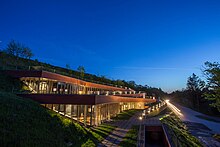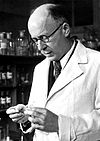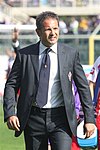Vukovar
Vukovar
Вуковар | |
|---|---|
| City of Vukovar Grad Vukovar Град Вуковар | |
      Clockwise, from top: Panoramic view of Vukovar and Danube river; downtown with arcades; Vukovar water tower; Eltz Manor; Franciscan monastery with church of Saints Philip and James and Workers' Hall | |
 Flag  Coat of arms | |
| Nickname(s): Grad Heroj (Hero City) | |
 Location of Vukovar Municipality | |
 Vukovar Location of Vukovar within Croatia | |
| Coordinates: 45°21′00″N 19°00′12″E / 45.35000°N 19.00333°ECoordinates: 45°21′00″N 19°00′12″E / 45.35000°N 19.00333°E | |
| Country | |
| Region | Podunavlje |
| County | |
| Government | |
| • Mayor | Ivan Penava (Independent, supported by DP) |
| • City Council | show
23 members |
| Area | |
| • City | 100.26 km2 (38.71 sq mi) |
| Elevation | 108 m (354 ft) |
| Population (2011)[1] | |
| • City | 27,683 |
| • Density | 280/km2 (720/sq mi) |
| • Urban | 26,468 |
| Demonym(s) | Vukovarac (masculine) Vukovarka (feminine) |
| Time zone | UTC+1 (CET) |
| • Summer (DST) | UTC+2 (CEST) |
| Postal code | 32 000 |
| Area code(s) | 032 |
| Vehicle registration | VU |
| Website | www |
Vukovar (Croatian pronunciation: [ʋûkoʋaːr]; Serbian Cyrillic: Вуковар[Note 1]) is a city in eastern Croatia. It contains Croatia's largest river port, located at the confluence of the Vuka and the Danube. Vukovar is the seat of Vukovar-Syrmia County. The city's registered population was 26,468 in the 2011 census, with a total of 27,683 in the municipality.[1]
Name[]
This section needs additional citations for verification. (December 2011) |
The name Vukovar means 'town on the Vuka River' (Vuko from the Vuka River, and vár from the Hungarian word for 'fortress'). The river was called "Ulca" in antiquity, probably from an Illyrian language. Its name might be related to the name of the river "Volga".[2] Folk etymology has connected it to the Croatian word "vuk", meaning "wolf". In other languages, the city in German is known as Wukowar and in Hungarian as Vukovár or Valkóvár. In the late 17th century, the medieval Croatian name Vukovo was supplanted by the Hungarian Vukovár.[3]
Municipal area[]
The administrative municipal area of the city contains the following settlements:[1]
In SFR Yugoslavia, the municipalities were generally larger, and the Vukovar municipality spanned the region from Vera and Borovo in the north, Ilok in the east and Tovarnik in the south, but it has since been divided into several municipalities.
Historically, Vukovar was divided into the Old Vukovar, New Vukovar and former workers' Bata village with Bata Shoes (now Borovo) factory, today known as the Vukovar suburb Borovo Naselje.
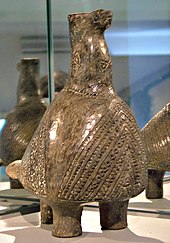
Geography[]
Vukovar is located in the Eastern part of the Republic of Croatia and is the centre of the Vukovar-Syrmia County. Its location places it at the border of historical provinces Eastern Slavonia and Western Syrmia.
The city is positioned on important transport routes. Since time immemorial transport routes from the northwest to the southeast were active in the Danube Valley through the Vukovar area.
After steam ships were introduced in the mid-19th century, and with the arrival of present-day tourist ships, Vukovar is connected with Budapest and Vienna upstream and all the way to Romania downstream. The Vukovar harbour is an important import and export station. The Danube has always been and remains the connection of the people of Vukovar with Europe and the world.
Vukovar is located 20 km (12 mi) northeast of Vinkovci and 36 km (22 mi) southeast of Osijek, with an elevation of 108 m (354 ft). Vukovar is located on the main road D2 Osijek—Vukovar—Ilok and on the Vinkovci—Vukovar railway (and road D55).
History[]
Prehistory[]
One Scordisci archaeological site in Vukovar dating back to late La Tène culture was excavated in the 1970s and 1980s as a part of rescue excavations in eastern Croatia.[4] Archaeological site was a part of the settlement network of Scordisci in the area of Vinkovci.[4]
Early history[]

Slavic tribes settled in this area in the 6th century. In the 9th century the region was part of the Slavic Principality of Lower Pannonia ruled by prince Pribina, and part of the Bulgarian Empire. In the 11th–12th century, the region was part of the Kingdom of Croatia; from the 13th to 16th century part of the Kingdom of Hungary; and between 1526 and 1687[5] under Ottoman rule.
Vukovar was mentioned first in the 13th century as Volko, Walk, Wolkov (original Croatian/Slavic name of the town was Vukovo). In 1231, Vukovo obtained its first privileges and later the right to levy taxes on passages along the Danube and the Vuka.[6] During administration of the medieval Kingdom of Hungary, the town was a seat of Valkó (Croatian: Vuka) county, which was located between the Drava and Sava rivers, while during Ottoman administration it was part of the Sanjak of Syrmia. At the end of the 17th century, the town's population numbered about 3,000 inhabitants.
Habsburg Monarchy and Yugoslavia[]

After the Treaty of Karlowitz in 1699, Vukovar was part of the Habsburg Monarchy, Slavonia (Transleithania after the compromise of 1867), and soon after in the Kingdom of Croatia-Slavonia, created when the Kingdom of Slavonia and the Kingdom of Croatia were merged in 1868.
In the late 19th and early 20th century, Vukovar was the seat of Syrmia County of the Kingdom of Croatia-Slavonia.
In 1918, Vukovar became part of the newly formed Kingdom of Serbs, Croats, and Slovenes (Yugoslavia in 1929). Between 1918 and 1922, Vukovar was the administrative seat of the county of Syrmia (Srijem), and between 1922 and 1929 it was the administrative seat of Syrmia oblast. After 1929, Vukovar was part of the Sava Banovina, and beginning in 1939 it was part of the Banovina of Croatia. Between 1941 and 1944, Vukovar was part of the Independent State of Croatia. During World War II the city was bombed by the Allies. In 2008 an unexploded bomb was found in the city from this period.[7] From 1945, it was part of the People's Republic of Croatia within the new Socialist Federal Republic of Yugoslavia. After the creation of the Kingdom of Serbs, Croats and Slovenes and in the wake of communism gaining popularity throughout Europe, Vukovar became the location where in 1920 the Socialist Labor Party of Yugoslavia (Communists) (Socijalistička radnička partija Jugoslavije - komunista) was renamed the Communist Party of Yugoslavia (Komunistička partija Jugoslavije).
Croatian War of Independence[]

Vukovar was heavily damaged during the Croatian War of Independence. Approximately 1,800 self-organised lightly armed defenders and civilian volunteers (the army of Croatia was still in its infancy at this time) defended the city for 87 days against approximately 36,000 troops of the Serb-dominated JNA equipped with heavy armour and artillery who lost 110 vehicles and tanks and dozens of planes during the battle. The city suffered heavy damage during the siege and was eventually overrun. It is estimated that 1,800 defenders of Vukovar and civilians were killed, 800 went missing and 22,000 civilians were forced into exile.[8]
The damage to Vukovar during the siege has been called the worst in Europe since World War II, drawing comparisons with Stalingrad.[9][10] The city's water tower, riddled with bullet holes, was retained by city planners to serve as a testimony to the events of the early 1990s.
On 18 November 2006 approximately 25,000 people from all over the country gathered in Vukovar for the 15th anniversary of the fall of the city to commemorate those who were killed during the siege. A museum dedicated to the siege was opened in the basement of a now rebuilt hospital that had been damaged during the battle.[11] On 27 September 2007 the International Criminal Tribunal for the former Yugoslavia convicted two former JNA officers, Mile Mrkšić and Veselin Šljivančanin for their involvement in the Vukovar massacre.[12]
As a result of the conflict, a deep ethnic divide exists between the Croat and Serb populations.
Demographics[]
| Year | Pop. | ±% |
|---|---|---|
| 1857 | 8,162 | — |
| 1869 | 9,453 | +15.8% |
| 1880 | 10,234 | +8.3% |
| 1890 | 11,205 | +9.5% |
| 1900 | 11,557 | +3.1% |
| 1910 | 12,149 | +5.1% |
| 1921 | 12,116 | −0.3% |
| 1931 | 12,738 | +5.1% |
| 1948 | 18,994 | +49.1% |
| 1953 | 20,616 | +8.5% |
| 1961 | 25,763 | +25.0% |
| 1971 | 38,830 | +50.7% |
| 1981 | 41,959 | +8.1% |
| 1991 | 46,735 | +11.4% |
| 2001 | 31,670 | −32.2% |
| 2011 | 27,683 | −12.6% |
| Source: Naselja i stanovništvo Republike Hrvatske 1857–2001, DZS, Zagreb, 2005 & Popis stanovništva 2011 | ||

In the years from 1948 until 1991 Vukovar's population increased quickly due to industrial development. Primarily it was immigration that fed the growth in the Vukovar region and in the town particularly. The region's population distribution changed notably too when the town of Ilok became the second largest town in the region.

| Year | Total | Croats | Serbs | Germans | Hungarians | Others | |||||
|---|---|---|---|---|---|---|---|---|---|---|---|
| 2011 | 27,683 | 15,881 | 57.37% | 9,654 | 34.87% | 58 | 0.21% | 347 | 1.25% | 1,743 | 6.30% |
| 2001 | 31,670 | 18,199 | 57.5% | 10,412 | 32.9% | 58 | 0.2% | 387 | 1.2% | 2,614 | 8.3% |
| 1990 | 44,639 | 21,065 | 47.2% | 14,425 | 32.3% | 94 | 0.2% | 694 | 1.5% | 8,361 | 18.8% |
| 1971 | 30,222 | 14,694 | 48.6% | 9,132 | 30.2% | 60 | 0.2% | 835 | 2.8% | 5,501 | 18.2% |
| 1948 | 17,223 | 10,943 | 63.5% | 4,390 | 25.5% | 54 | 0.3% | 913 | 5.3% | 923 | 5.3% |
| 1931 | 10,242 | 5,048 | 49.6% | 1,702 | 16.6% | 2,670 | 26.1% | 571 | 5.6% | 215 | 2.0% |
| 1910 | 10,359 | 4,092 | 39.5% | 1,628 | 15.7% | 3,503 | 33.8% | 954 | 9.2% | 183 | 1.8% |
The most significant change was the forced displacement and internment of the German civilian population after World War II. The confiscated houses and properties were given to Croat and Serb colonists during the years of Socialist Yugoslavia.[citation needed]
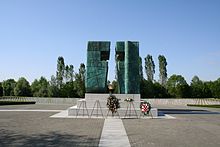
| Year of census | total | Croats | Serbs | Others |
|---|---|---|---|---|
| 2001 | 31,670 | 18,199 (57.46%) | 10,412 (32.88%) | 3,059 (9.66%) |
| 1991 | 84,024 | 36,910 (43.93%) | 31,910 (37.98%) | 15,204 (18.09%) |
| 1981 | 81,203 | 30,157 (37.14%) | 25,146 (30.97%) | 25,903 (31.89%) |
| 1971 | 76,602 | 34,629 (45.21%) | 28,470 (37.17%) | 13,593 (17.09%) |
| 1961 | 54,707 | 24,527 (44.83%) | 22,774 (41.63%) | 7,406 (13.54%) |

The Croats were in the majority in most villages and in the region's eastern part, whereas the Serbs dominated in the northwest. Vukovar's population was ethnically mixed and had 28 ethnic groups before the war. Since the boundaries of the municipality have changed a few times, there are significant differences in the population census between 1961 and 1971, and 1991 and 2001.
Particularly since the war in Croatia, much of the native Croat population has moved to other areas of Croatia or emigrated to Western Europe (notably Germany or Austria) and many Serbs have either moved to Serbia or to Canada and Western Europe.
Fifteen years after the war, in 2006, the city's ethnic makeup showed equal percentages of Croat and Serb residents.[16] The city remains very divided, as a deeper sense of reconciliation has failed to take root. The ethnic communities remain separated by mistrust, divided institutions and disappointment. Separate schooling for Croat and Serb children remains in place. Incidents involving Croats and Serbs occur regularly, and public spaces have become identified not by the services they offer but by the ethnicity of those who gather there. Even coffee shops are identified as Croat or Serb.[17]
In 2013, the government's intention to implement in Vukovar the Constitutional Law on the Rights of Ethnic Minorities in Croatia that allowed for minorities, where they made up more than a third of a city's population, to be entitled to have their language used for official purposes,[18] provoked considerable popular opposition.[citation needed]
Minority languages[]
According to the 2011 Croatian census, the Serb population of the city has exceeded one third, which is the legal prerequisite for the Serbian Cyrillic alphabet to become co-official. In 2013, this re-ignited political discussion on the matter, which had already arisen in 2009 after the local promulgation of Serbian Cyrillic as available for public use.[19]
Cultural heritage[]
Among a number of notable buildings, severely damaged in the recent war, are the Eltz Manor of the Eltz noble family from the 18th century, Baroque buildings in the centre of the town, the Franciscan monastery with the parish church of Sts. Philip and James, the water tower, the birth house of Nobel prize winner Lavoslav Ružička, the Orthodox church of St Nicholas, the etc. Since the peaceful reintegration under Croatian control in 1998, many buildings have been rebuilt, but there are many ruins still in the town.
Outside the town, on the banks of the Danube toward Ilok, lies a notable archaeological site, Vučedol. The ritual vessel called the Vučedol Dove (vučedolska golubica) is considered the symbol of Vukovar. Vučedol is also an excursion destination, frequented by anglers and bathers, especially the sandy beach on Orlov Otok (Eagle's Island).[citation needed]
Vukovar Synagogue was built in 1889, and was devastated by the Nazis in 1941. The ruins stood until they were demolished in 1958.
Politics[]
Local Government[]
Following the 2021 Croatian local elections the Assembly of the City of Vukovar is composed of 19 elected representatives.[20] Out of a total of 23,138 eligible voters 11,160 or 48.23% participated in the elections and there were 10,808 or 96.85 % valid ballots.[20] Right wing Ivan Penava's Independent List got 4,516 or 41.78% ballots and 9 elected representatives, Croatian Democratic Union got 2,347 or 21.71% ballots and 5 elected representatives, Independent Democratic Serb Party got 1,222 ballots or 11.30% and 2 elected representatives, former Social-Democrat major Želko Sabo's Independent List got 712 or 6.58% ballots and 1 elected representative, Democratic Alliance of Serbs got 631 or 5.83% ballots and 1 elected representative, coalition of the Croatian People's Party – Liberal Democrats, Croatian Peasant Party, Croatian Social Liberal Party and Active Independent Pensioners got 599 or 5.54% ballots and 1 elected representative.[20] Parties which failed to reach 5% of votes required for allocation of seats in the City Assembly were the Social Democratic Party of Croatia with 3.91%, Serb politician Dragan Crnogorac's Independent List with 1.72% and Pavao Josić's Independent List with 1.59%.[20]
The mayor of Vukovar was elected in the second round of the elections after nobody among 5 candidates received over 50% of votes.[20] In the second round right wing candidate Ivan Penava was elected with 5,392 votes, while losing candidate from the Croatian Democratic Union Nikola Mažar got 4,529 votes.[20] Deputy Mayor from the Serbs of Vukovar community was elected in the first round with Independent Democratic Serb Party's candidate Srđan Kolar receiving 1,128 votes and the losing candidate from the Democratic Alliance of Serbs Srđan Milaković receiving 781 vote.[20]
| Party | Votes | % | Seats | ||||
|---|---|---|---|---|---|---|---|
| Ivan Penava's Independent List | 4,516 | 41.78 | 9 | ||||
| Croatian Democratic Union | 2,347 | 21.71 | 5 | ||||
| Independent Democratic Serb Party | 1,222 | 11.30 | 2 | ||||
| Želko Sabo's Independent List | 712 | 6.58 | 1 | ||||
| Democratic Alliance of Serbs | 631 | 5.83 | 1 | ||||
| Croatian People's Party – Liberal Democrats Croatian Peasant Party Croatian Social Liberal Party Active Independent Pensioners |
599 | 5.54 | 1 | ||||
| Social Democratic Party of Croatia | 423 | 3.91 | 0 | ||||
| Independent politician Dragan Crnogorac's list | 186 | 1.72 | 0 | ||||
| Pavao Josić's List | 172 | 1.59 | 0 | ||||
| Invalid/blank votes | 352 | 3,15 | — | ||||
| Total | 11,160 | 100 | — | ||||
| Registered voters/turnout | 23,138 | 48,23 | — | ||||
 | |||||||
| Source[20](in Croatian) | |||||||
Museums[]
Vukovar Municipal Museum[]
[21] was founded in 1948 by a donation of Roman money, furniture, weapons, and paintings given to his city by Dr. Antun Bauer. The museum started in the Coach Post Building in the old baroque centre, but was moved to Castle Eltz in 1966. Up until 1991 the museum had about 50 thousand exhibits in four separate divisions:
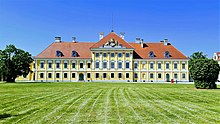
The Heritage Museum displayed the history of Vukovar from prehistory to modern times and some of its most important collections included the items excavated at the archaeological site Vučedol and the Culture and History Collection, which contained documents, furniture, and pieces of art, and provided an authentic display of the life of the citizens of Vukovar and the Eltz family.
The Bauer Collection contained the most complete overview of modern Croatian art from the end of the 19th and the early 20th century with special emphasis on the period between the two world wars. Among more than one thousand pieces of art the Collection contained the works of Vlaho Bukovac, Mato Celestin Medović, Ico Kršnjavi, Ivan Meštrović, Fran Kršinić, Emanuel Vidović, and many others.
Memorial Museum of the Nobel Prize Winner Lavoslav Ružička, located in the house where he was born, it displayed original documents and medals from the life and work of the Nobel Prize winner, who received this prestigious award in 1939 for chemistry.
Memorial Museum of the 2nd Congress of the Communist Party of Yugoslavia was located in the Workers' Hall building, former Grand Hotel, where the congress was held in 1920. The materials connected to the development of the labour movement and the founding of the Communist Party of Yugoslavia was exhibited and presented here.
During Croatian War of Independence, Castle Eltz suffered significant damage and the collections which were kept there were also damaged: some of the exhibits were completely destroyed, some have disappeared and cannot be recovered, and some of them were taken to Serbia. After years of effort and diplomatic activity by the Ministry of Culture of the Republic of Croatia that part of the collection was returned to Vukovar on 13 December 2001. In the period from 1991 to 1997 the Vukovar City Museum was operating in the Mimara Museum in Zagreb.
Near the end of 1992 a collection was founded with the name Vukovar Museum in Exile which began the creation of a collection of donations by Croatian, and soon after also European, artists for the City of Vukovar. To this day that collection has gathered over 1400 pieces of modern Croatian and European art. This collection represented the beginning of the cultural restoration of Vukovar and it is displayed at the restored Castle Eltz today, along with other museum collections which are part of the permanent collection of the museum.
Now that it is renovated, the Castle Eltz complex represents a unique museum and gallery , science, and multimedia centre, which preserves and presents cultural heritage as an element of national identity and the continuity of life in this area.
In 2013 the Vukovar City Museum won a prestigious Anton Štifanić Award for special contributions to the development of tourism in the Republic of Croatia and in 2014 won the Simply the Best award.
Vučedol Culture Museum[]

Vučedol Culture Museum[22] is open on the tenth of June 2015. Is one of the most modern museums in Croatia.
The museum is positioned on one side almost at the very Danube riverbank and on the other side, on four floors, in the hill, while its flat green roof is a promenade which leads to the archaeological site. As for the content, the permanent exhibition is displayed in 19 rooms on almost 1200 square metres. In addition to using state of the art technologies, multimedia and interactive content, the way of life on Vučedol culture localities, spreading through 12 European countries, is displayed.
Events[]

In Vukovar during the year there are many cultural events. Certainly the most important is the Danube region Vukovar Film Festival.
- The Vukovar Film Festival is unique due to many things. It is the only film festival of the community of Danube region countries and the only one held literally on the Danube. It is designed to promote and spread the creative development of filmmakers from the region and it is organised with the intent to contribute to cultural restoration in the city destroyed in the Homeland War. The theme of the festival, the films from the Danube region countries, is logically connected to Vukovar as a centre of the Croatian part of the community of the Danube region. Cultural influences have always spread along the Danube. Since the Vukovar film festival is the only film festival focused on this region, on the international level it seeks to connect filmmakers from the Danube region countries, whose film making industries are some of the most vital in the world.
- The Vukovar Chamber music Festival is held in the first half of June at the area of Castle Eltz, the Chapel of Saint Rok, and the Church of Saint Filip and Jakov in Vukovar, and it traditionally starts with a concert by the Zagreb Philharmonic Orchestra. The guests of the festival are solo performers and chamber ensembles from Croatia and Europe.
- The was founded in 1996 as a national theatre conference. There are around 15 puppet theatres performing every year and in the five days of the festival they give around 100 performances in the towns and municipalities of Vukovarsko-Srijemska County. The centre of the festival is the town of Vukovar where 16 performances are played and where various workshops and an awards ceremony are held (for the award for life achievement in contribution to Croatian puppetry). The festival is held at the same time every year, the week before the Holy Week before Easter. In 2011 there were 16 puppet theatres from Croatia and abroad (Pecs, Mostar) that participated the festival.[23][24]

- Saint Vinko's Day in Vučedol is an event held traditionally every year on 22 January at the Goldschmidt farm grounds. This event marks the beginning of the year's work in the vineyards and it starts with a blessing of the vineyards. Sausages and other cured meat products are hung on the vines, because of a tradition that by hanging large sausages on the vines, the grape vines will be more fruitful and the grape clusters will be large. The same legend claims that if on that day, before noon, icicles or snow melts and creates puddles in which a sparrow can bathe, the year will be fruitful and there will be so much wine that people can bathe in it. Along with an accompanying culture and art programme, this event represents a true vineyard experience, with mulled wine and delicacies that the visitors may taste or prepare for themselves, on the fire.
- Bonofest is held every year in the middle of May. It is a festival of spiritual music held in the church of Saint Filip and Jakov. The two evenings of the festival feature musicians who were selected by a committee of professionals.[25]
- The Ethno fair is organised each year by the Vukovar City Tourist Board and takes place in September in the city centre in the "Hotel Grand" building. Various craftsmen, winemakers and other manufacturers sell their handmade products which represent the heritage of this part of Croatia.
- The Vukovar Advent Festivities start four weeks during Advent during which a series of musical and performance events are organised. Each event is special as the traditional lighting of the candles is performed.
- Silent night in Vukovar is a traditional Christmas concert of Croatian National Television. It is held during Vukovar's Advent Festivities in the Church of St. Philip and James
- The Christmas Fair is held a couple of days before Christmas.
Institutions[]
Vukovar is the seat of several local organisations and institutions such as Vukovar-Srijem County, Polytechnic Lavoslav Ružička Vukovar, Gymnasium Vukovar, etc. It is also the seat of several organisations and institutions of the Serb minority in Croatia such as the Joint Council of Municipalities, the Association for Serbian language and literature in the Republic of Croatia, the Independent Democratic Serb Party, the Party of Danube Serbs as well as the seat of the Consulate General of Republic of Serbia in Vukovar.

Economy[]
Vukovar port is situated on 1,335 kilometres (830 miles) of the downstream flow of Danube river, on its right coast, and is the biggest official concessioner in the Vukovar region. The Company focuses its business on the transshipment of general and bulk cargo. The Port (850m long and 45m wide) is conveniently situated on the main current of the river, enabling navigation throughout the whole year regardless of water level. The Port recorded productivity growth and increase in cargo transshipment from 123,570 tons in 2009 to 295,199 tons in 2011. The majority of transshipment was in the category of bulk cargo (237,119 tons in 2011), while packaged goods and heavy cargo accounted for a total of 58,080 tons.
The economy of Vukovar is based on agriculture, trade, viticulture, food industry, textile industry, building materials industry, footwear industry and tourism. Vukovar is the largest Croatian town and river port on the Danube. Its economy is based on trade, farming, viticulture, livestock breeding, textiles, the food-processing industry, the footwear industry and tourism.
However, the port infrastructure in Vukovar, only partly reconstructed, still does not meet the requirements of the market. The layout of the port area, particularly the access to railway tracks and the quay operational area, are technologically inappropriate and not compatible with market standards. There is also a lack of warehouse capacity. Altogether, it affects the quality of the service provided in the Port and thus decreases the port competitiveness.[26]

Borovo, a manufacturer of footwear located in Vukovar, ended up devastated and demolished in 1991 during the war. In its prime it employed 24,000 employees and tried to break into foreign markets with innovations in the manufacture of footwear, but today there are fewer than 1000 employees.
On 7 June 1931, Borovo was founded by Czech industrialist Tomáš Baťa. Borovo Factory was one of the few Bata Shoes factories in the world. In 1933, the production of rubber and technical goods started, and Bata in the gum industry became one of the first companies in the then Kingdom of Yugoslavia.
Between 1947 and the end of the 1980s, Borovo grew into the largest and most economically most powerful company in the production and sale of footwear and rubber in this part of Europe. Borovo Facory produced more than 20 million pair of shoes a year, thousands of tons of auto-rubber and rubber-technical goods, 22,000 people were employed at today's factories with more than 600 stores across the country. This time was marked by the significant export to European and other countries.
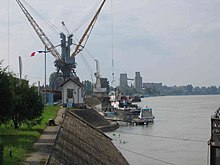
The Business Innovation Centre BIC-Vukovar is a rounded concept for the support of innovative, technologically-oriented entrepreneurship independent of the size or maturity of the company. The goal of this centre is to attract or provide incentives for the creation and growth of technologically-oriented companies in all phases of their life-cycle and provide them with a complete package of services to support their businesses, from workspaces, support for innovations, growth and export, as well as various intellectual and administrative services[27]
Since the end of the war, much of the infrastructure in Vukovar has remained unrestored and unemployment is estimated to stand at 40 percent.[17] Vukovar is underdeveloped municipality which is statistically classified as the First Category Area of Special State Concern by the Government of Croatia.[28]
Transport[]

Vukovar is located in the northeastern part of the Republic of Croatia (45 ° 20 'north latitude and 16 ° 40' east longitude) and is the seat of the Vukovar-Srijem County. It lies at the mouth of the River Vuka in the Danube River (Luka Vukovar - Rkm 1335) and has a border position on the Danube River towards Serbia in Vojvodina. Due to the particularity of its geographical position, primarily marked by the international waterway - Danube River, Vukovar represents a significant traffic hub of the main roads.
There is a good traffic connection with the neighbouring countries of Bosnia and Herzegovina, Hungary and Serbia. Vukovar is 16 km away from the town of Vinkovci, the largest railway hub in Croatia. It is well connected by state road D55 via Vinkovci, 39 km away from the node of Županja on the A3 Zagreb-Lipovac motorway. The 33 km distant Osijek is connected by the state road D2, via which Vukovar is connected to Corridor Vc (motorway A6).
With Osijek Airport, 20 km nort–west of Vukovar this area is also included in air traffic.
The city's position is very good for access to other markets within Central and South-Eastern Europe because it is located on or near the following trans-European corridors:

- Pan-European Transport Corridor VII - River Danube (Luka Vukovar)
- Osijek Airport -> 16 km away
- Pan-European Transport Corridor X - railway -> 14 km from Vinkovci hub (largest regional railway hub)
- Highway A3 -> 42 km away
- The European route E73 - the A5 and the A5 motorway -> 31 km away
Education and media[]
History and today[]

In accordance with its position in the economic and administrative terms of Vukovar developed in educational, cultural and health centre. For the 1730th Vukovar has developed popular education. From the Franciscan School has developed elementary school in Old Vukovar. New Vukovar has its own school.
They worked and denominational schools for children and Orthodox Jewish religion, and schools in the German , Serbian orthodox and Hungarian. Apprentice school was established in 1886. year, a gymnasium 1891st.
Printing was opened 1867th when they first came out and Vukovar in German newspaper "Der Syrmier-Bote".
Vukovar has seven primary schools and five high schools, including one gymnasium (Gymnasium Vukovar) and one music school. The city is also home to the Lavoslav Ružička polytechnic, which offers study opportunities in the fields of economics and trade, law and kinesitherapy. Additionally, the University of Split runs dislocated studies in information technology, economics and law in Vukovar. Similarly, the University of Osijek offers programmes in economics and law.
Sport[]
Major sports facilities in the city of Vukovar are: Borovo Sports Hall (capacity 3,000 spectators) opened for maintenance International Table Tennis Championship of Yugoslavia, (Borovo 1978),[29] stadium FC Vukovar '91, sport and recreation center "Lijeva Bara" with a hall for martial arts, Borovo naselje Tennis Centre, Sports Centre "Hrgović" - tennis courts and horse riding, firing range, "Hill-7" as well as several football stadiums including Vukovar City Stadium and the FC Vuteks Sloga Stadium.
Currently the most modern swimming pool complex in Croatia is open in March 2017 in Vukovar. Pool complex is located about 5 km from city centre of Vukovar. Available is indoor swimming pool 50 x 25 metres. Also there are two smaller outdoor pools 22x12 metres and 25x12 metres. Inside swimming complex is also fitness room, sauna, dressing rooms, restaurant. Inside same sport complex is also sport hall available for all indoor sports, boxing, gym, fitness, bowling.
Use in popular culture[]
- The siege of Vukovar is an important part in the background of the novel The Redeemer by popular Norwegian crime-writer Jo Nesbø, in whose plot traumatized survivors of the siege arrive in Oslo and play a major role in the murder mystery which Inspector Harry Hole must solve.
- Harrison's Flowers is a French war drama from 2000, directed by Elie Chouraqui based on the novel "Diable à l' avantage" by Isabel Ellsen. The story takes place during the battle of Vukovar, in the middle of which an American woman (Andie MacDowell) searches for her missing husband, a journalist named Harrison, who disappeared during the siege. The film was shot in the United States and the Czech Republic. Starring: Andie MacDowell, Elias Koteas, Brendan Gleeson, Adrien Brody and David Strathairn.
- During the Republic of Serbian Krajina occupation of the city, Serbian director Boro Drašković filmed Vukovar, jedna priča (Vukovar: A Story, also known as Vukovar poste restante). The film was selected as the Serbian entry for the Best Foreign Language Film at the 67th Academy Awards, but was not accepted as a nominee. It has been alternately characterised as an anti-war film and as war propaganda.[30]
- The 1991 siege and hospital massacre by JNA paramilitaries is remembered in Croatian singer-songwriter Nenad Bach's song "Vukovar."
- Dr. Luka Kovač, the ER character played by Goran Višnjić, is supposedly from Vukovar.
Notable people[]
- Károly Unkelhäusser - Hungarian politician
- Marko Babić – Croatian soldier
- Franjo Benzinger – Croatian pharmacist
- Damir Bičanić – Croatian handballer
- Zoran Bognar – Serbian poet and writer
- Dražen Bošnjaković – Croatian politician
- Aleksandar Čavrić – Serbian footballer
- Saša Drakulić – Serbian footballer
- Jakob Eltz – German nobleman and former member of Croatian parliament
- Milan Gajić – Serbian footballer, U-20 World champion
- Jovan Gavrilović – politician and regent to adulthood of King Milan I of Serbia
- Siniša Glavašević – Croatian reporter
- Dinko Jukić – Austrian swimmer, European champion
- Mirna Jukić – Austrian swimmer, European champion and Olympic Games bronze medalist
- Damir Kreilach – Croatian footballer
- Milan Mačvan – Serbian basketball player, Olympic Games and Eurobasket silver medalist
- Damir Martin – Croatian rower
- Tomislav Merčep – Croatian politician and paramilitary leader
- Predrag Matić – Croatian politician
- Siniša Mihajlović – Serbian footballer, European Cup champion
- Tomislav Mikulić – Croatian footballer
- Ante Miše – Croatian footballer
- Petar Mlinarić – Member of Croatian parliament
- Josip Mrzljak – Croatian priest, bishop of Varaždin
- Zaharije Orfelin – Serbian poet
- Pavao Pavličić – Croatian novelist
- Leopold Ružička – Nobel prize winner in chemistry
- Vladimir Štengl – Former Member of the Croatian Parliament and former mayor of Vukovar
- Blago Zadro – Croatian Army general
- Dario Zahora – Croatian footballer
- Tezija Zararić – Croatian musician
International relations[]
Foreign representatives[]
 The Consulate General of Republic of Serbia in the city of Vukovar.[31]
The Consulate General of Republic of Serbia in the city of Vukovar.[31]
Twin towns – sister cities[]
Vukovar is twinned with:[32][33]
 Bač, Serbia
Bač, Serbia Bački Petrovac, Serbia
Bački Petrovac, Serbia Mostar, Bosnia and Herzegovina
Mostar, Bosnia and Herzegovina Odžak, Bosnia and Herzegovina
Odžak, Bosnia and Herzegovina Partizánske, Slovakia
Partizánske, Slovakia
Vukovar also cooperates with Sarajevo in Bosnia and Herzegovina and with multiple domestic municipalities.[32]
Notes[]
- ^ The official use of Serbian Cyrillic in Vukovar is subject to a dispute involving the local and national authorities, and is the source of a current political controversy. See § Minority languages.
References[]
- ^ Jump up to: a b c "Population by Age and Sex, by Settlements, 2011 Census: Vukovar". Census of Population, Households and Dwellings 2011. Zagreb: Croatian Bureau of Statistics. December 2012.
- ^ Antun, Mayer (1 April 1935). "Ime Mursa". Vjesnik Arheološkog Muzeja U Zagrebu. 16 (1). Retrieved 3 April 2018.
- ^ Treasures of Yugoslavia, p.249.
- ^ Jump up to: a b Dizdar, Marko (2016). "Late La Tène Settlements in the Vinkovci Region (Eastern Slavonia, Croatia): Centres of Trade and Exchange" (PDF). Boii - Taurisci: Proceedings of the International Seminar, Oberleis-Klement, June 14th–15th, 2012. Austrian Academy of Sciences Press: 31–48. Retrieved 22 January 2019.
- ^ Treasures of Yugoslavia, published by Yugoslaviapublic, Beograd, available in English, German and Serbo-Croatian, 664 pages, 1980
- ^ Treasures of Yugoslavia, p.249
- ^ "Bombs from the II World War found in Vukovar" (in Croatian). vktel.com. Archived from the original on 29 November 2010. Retrieved 18 November 2010.
- ^ Tucker, Spencer (2010). A Global Chronology of Conflict: From the Ancient World to the Modern Middle East. Santa Barbara, California: ABC-CLIO, LLC. p. 2617. ISBN 978-1-85109-667-1.
- ^ "Mesić nakon sastanka s Del Ponte: Netko mora odgovarati što je Vukovar pretvoren u Staljingrad". www.index.hr.
- ^ Seeney, Helen (22 August 2006). "Croatia: Vukovar is Still Haunted by the Shadow of its Past". Deutsche Welle. Archived from the original on 17 November 2010. Retrieved 6 May 2009.
- ^ "Tens of thousands gather for 15th anniversary of Vukovar siege 1991 – 2006". Croatian World Network. AFP. Archived from the original on 19 July 2011. Retrieved 18 November 2010.
- ^ "Two jailed over Croatia massacre". news.bbc.co.uk. BBC NEWS. 27 September 2007. Archived from the original on 13 October 2010. Retrieved 18 November 2010.
- ^ "Stanovništvo grada Vukovara" (in Croatian). Retrieved 4 May 2013.
- ^ "SAS Output". Dzs.hr. Retrieved 23 June 2009.
- ^ "Državni zavod za statistiku Republike Hrvatske". Dzs.hr. Retrieved 12 March 2013.
- ^ Vukovar: Day of remembrance Archived 13 November 2010 at the Wayback Machine, B92, 18 November 2006. Retrieved 2 October 2007.
- ^ Jump up to: a b Vukovar still divided 15 years on, B92, 27 November 2006. Retrieved 2 October 2007.
- ^ Croatia plans Cyrillic signs for Serbs in Vukovar BBC, 3 January 2013.
- ^ Drago Hedl (1 February 2013). "Ekskluzivna reportaža iz Vukovara – Ćirilica će nevidljivi zid koji dijeli Hrvate i Srbe pretvoriti u betonski". Jutarnji list (in Croatian). Retrieved 9 February 2013.
- ^ Jump up to: a b c d e f g h "Rezultati izbora u Vukovarsko-srijemskoj županiji" (PDF). The State Electoral Commission (DIP). Retrieved 4 September 2021.
- ^ "Gradski muzej Vukovar / Vukovar Municipal Museum". www.facebook.com. Retrieved 3 April 2018.
- ^ "Vukovar – Home of the Vučedol Dove – Way to Croatia". waytocroatia.hr.
- ^ "Vukovar puppets spring - Assitej International". www.assitej-international.org. Retrieved 3 April 2018.
- ^ "Na Lutkarsko proljeće dolaze 84 predstave, Vinkovci". Portal Vinkovci. Retrieved 3 April 2018.
- ^ "VUKOVAR TOURIST BOARD - Bonofest". turizamvukovar.hr.
- ^ http://www.aik-invest.hr/wp-content/uploads/2013/01/PortVukovarEN.pdf
- ^ User, Super. "About project". bic-vukovar.hr. Retrieved 3 April 2018.
- ^ Lovrinčević, Željko; Davor, Mikulić; Budak, Jelena (June 2004). "AREAS OF SPECIAL STATE CONCERN IN CROATIA- REGIONAL DEVELOPMENT DIFFERENCES AND THE DEMOGRAPHIC AND EDUCATIONAL CHARACTERISTICS". Ekonomski Pregled. Ekonomski pregled, Vol.55 No.5-6. 55 (5–6): 389–411. Retrieved 25 August 2018.
- ^ "Table Tennis - Championship of Yugoslavia Borovo 1978". delcampe.net.
- ^ Pavičić, Jurica (23 October 2009). "J. Pavičić: Film me iznervirao zbog te vrste političke retorike". Jutarnji list (in Croatian). Retrieved 22 February 2021.
- ^ "Consulates- Vukovar, Croatia". mfa.gov.rs.
- ^ Jump up to: a b "Gradovi prijatelji". vukovar.hr (in Croatian). Vukovar. Retrieved 23 March 2021.
- ^ "Mesto Partizánske bude mať nových cezhraničných partnerov". partizanske.sk (in Slovak). Partizánske. Retrieved 23 March 2021.
Bibliography[]
- Cresswell, Peterjon; Atkins, Ismay; Dunn, Lily (10 July 2006). Time Out Croatia (First ed.). London, Berkeley & Toronto: Time Out Group Ltd & Ebury Publishing, Random House Ltd. 20 Vauxhall Bridge Road, London SV1V 2SA. ISBN 978-1-904978-70-1. Retrieved 10 March 2010.
External links[]
| Wikimedia Commons has media related to Vukovar. |
- Official site (in Croatian)
- Tourist office Vukovar
- Photo Gallery of Vukovar
| Wikivoyage has a travel guide for Vukovar. |
- Vukovar
- Cities and towns in Croatia
- Populated places on the Danube
- Populated places in Vukovar-Syrmia County
- Syrmia County
- Populated places in Syrmia
- 13th-century establishments in Croatia


